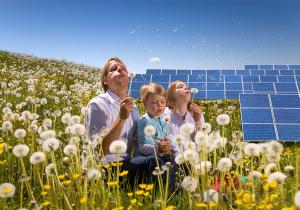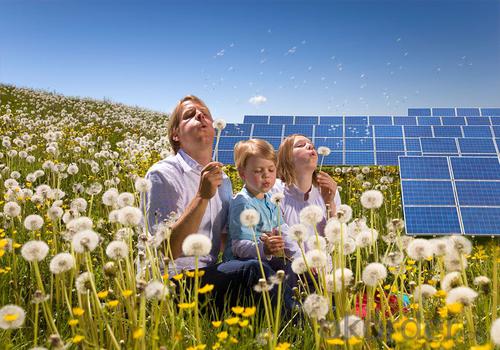Mojave Desert Silicon Polycrystalline Solar Panel 310W
- Loading Port:
- Nanjing
- Payment Terms:
- TT OR LC
- Min Order Qty:
- 200000 watt
- Supply Capability:
- 20000000 watt/month
OKorder Service Pledge
OKorder Financial Service
You Might Also Like
1.About us
We are a high-tech group wich specializes in solar products design,research, manufacture, sales,solar projects design
and installation. Our national sales service covers seven parts, including northeast, north, east, middle, south, northwest and southwest, international sales covers five continents and over forty countries, including Germany, Italy, Spain, France, America and Brazil etc.
Our present annual capacity is 6 million for wafer, 60MWp for solar cells,200MWp for solar modules and one hundred
thousand for solar applications. It is expected that the annual capacity of 2012 will be up to 30 million for wafer, 300MWp for solar cells, 1000MW for solar modules and 2 million for solar applications.
We now provide Polycrystalline Silicon Solar Module;Thin Film Solar Module;Monocrystalline Silicon Solar Module
Feature of our product
High conversion efficiency mono/poly-crystalline amorphous silicon solar cells
Modules incorporate high performance bypass diodes to minimize the power drop caused by shading
High transmittance, low-iron tempered glass
High performance EVA resin to prevent destroying and water.
AI frame: without screw, corner connection. 8 holes on the frame can be installed easily
Good performance of preventing from atrocious weather such as wind and hails
Certifications: CE IEC TUV VDE, Class I
10 years 90% output warranty
25 years 80% output warranty
2.Data sheet
| Maximum power | 310W |
| Cell type(mm) | Polycrystalline solar cell 156*156 |
| Number of cell(pcs) | 72(6*12) |
| Manufacture site | China |
| Open-circuit voltage(voc) | 45V |
| Maximum power voltage(vmp) | 37V |
| Short-circuit current(isc) | 8.8A |
| Optimum operating current(imp) | 8.38A |
| Power tolerance | 0~+5W |
| Module efficiency | 16% |
| Dimensions(mm) | 1956*992*40 |
| Weight | 27kg |
| Backsheet | Silver |
| Frame Colar | White |
| Frame | Anodized Aluminum Alloy |
Depends on various demands from different customers, CNBM could supply any kinds of service to meet you, please feel
free to contact us at any time.

3.FAQ:
1. How long will my inquiry get response?
Your inquiry related to our products or prices will be replied within 24 hours.
2. Can I get professional service and suggestion?
Well-trained and experienced staffs to answer all your questions in fluent English.
3. Do you accept OEM or customized design?
OEM & ODM, any your customized lightings we can help you to design and put into product.
4. What if I need specific design?
Distributorship are offered for your unique design and some our current models.
- Q: Can solar panels be installed on assisted living facilities?
- Yes, solar panels can be installed on assisted living facilities. In fact, installing solar panels on these buildings can be highly beneficial as it can help reduce energy costs, promote sustainability, and contribute to a greener environment. Additionally, solar panels can provide a reliable source of renewable energy, helping to ensure a more reliable power supply for the facility and its residents.
- Q: I have seen DIY software which explains everything for novices. Specifically, how to build your own solar panels and tie them into your home electrical system for about $00 in parts.Has anyone tried doing this? Was it easy?
- The output of this system will be very small, but it is a staring point. You should consider solar water heating as a way to save on your energy bills. Heating your water accounts for about 25% of your energy use. If you can cut that by 75%, you will save a lot of money. Depending on where you are and how many are in your household, it may cost about $5000 for a do-it-yourself installation. There are tax incentives available that could potentially pay for as much as half of the system. These systems can pay for them selves in as little as 4 - 5 years.
- Q: Are there government incentives for installing solar panels?
- Yes, many governments provide incentives for installing solar panels. These incentives can include tax credits, grants, rebates, and low-interest loans to encourage individuals and businesses to adopt solar energy.
- Q: I am looking to buy a solar panel.What does it mean when in the title it says 200 watts, or 50 watts?
- Solar okorder /
- Q: How efficient are solar panels when it comes to turning light into energy? If it's not 00%, why? Can it be improved? Also, how do solar panels work, exactly.
- Solar okorder
- Q: Can solar panels be installed on a boat or RV?
- Yes, solar panels can be installed on both boats and RVs. They are a popular and efficient way to generate electricity while on the move. Solar panels can provide a reliable source of power for charging batteries, running appliances, and lighting, making them a great option for sustainable energy on the go.
- Q: Can solar panels be used for powering agricultural equipment?
- Yes, solar panels can be used to power agricultural equipment. Solar energy can be harnessed and converted into electricity, which can then be used to power various types of agricultural equipment such as irrigation systems, pumps, tractors, and other machinery. This sustainable and renewable energy source offers a cost-effective and environmentally friendly solution for powering agricultural operations.
- Q: I want to build a standalone wifi repeater -- powered by the sun. The problem is how much solar power and how big of a battery?net draw 4.5v @ 0.66A with loadnet draw 4.5v @ 0.60A no loadI'm assuming the best choice would be a 6v battery with a a couple diodes in series to induce ~.5v drop. Then, I need something to charge it -- I found 2v 6w solar chargers in the automotive section of Sears and 6v 2w solar chargers in the marine section of Dick's Sporting Goods.How many solar panels and what capacity batteries should I use? Is this the best method or should I use a voltage regulator and go with 2v batteries?I need this to be as cheap and simple as possible...
- I do not know, but there is a house in Lafayette which was built with solar power. It was to have a solar system, so the contractor's first act was to put up a solar array on the property. It had battery backup, and was used to provide the electrical power during construction. during completion of the house the solar system was installed on the roof of the house.
- Q: I was told by a veteran that jcpl had a program that installs free solar systems for disabled vets.If this is true who do i contact?
- yes. there is a free solar panel program for veterans.
- Q: Can solar panels be installed on drones?
- Yes, solar panels can be installed on drones. This allows them to generate power from sunlight and extend their flight time by reducing reliance on batteries. However, the size and weight constraints of drones present challenges, so the efficiency and effectiveness of solar panels on drones may vary.
Send your message to us
Mojave Desert Silicon Polycrystalline Solar Panel 310W
- Loading Port:
- Nanjing
- Payment Terms:
- TT OR LC
- Min Order Qty:
- 200000 watt
- Supply Capability:
- 20000000 watt/month
OKorder Service Pledge
OKorder Financial Service
Similar products
Hot products
Hot Searches
Related keywords




























